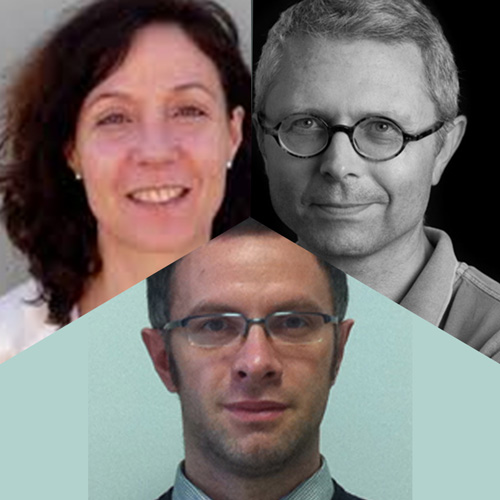Morrás, Madella i Ventura
5. Kaleidoscope
What do the humanities and artificial intelligence (AI) have in common?

Maria Morrás, Marco Madella and Simone Ventura, lecturers in the UPF Department of Humanities
The answer is obvious: both are the product of human ingenuity and art and, therefore, unnatural (DRAE). Coined in 1956 by Marvin Minsky, the term AI denotes procedures that enable machines to simulate some – but not all – of the functions intrinsic to human beings: perceiving, representing and recognizing objects (the basis of knowledge for Aristotle), storing and classifying information about them (data), and creating alternative models (representing and playing with hypothetical worlds). AI should thus be considered a humanistic discipline, as their aim is to reflect on the cultural products created by humans, that is, products that have arisen as a result of civilizing action through techne (not technology), defined as a set of effective skills accompanied by knowledge of the reasons why this procedure is effective. This self-reflective nature is precisely what AI lacks, and its main limitation: it can process and produce information, even learn; but it does not create knowledge even if it serves as a basis for it. That is why the humanities and AI complement and supplement each other. Hence, the brand new supradiscipline of Humanities AI, which promotes the analysis of AI by means of humanistic methods. That is precisely the ambition of new centres such as those at Carnegie Mellon (https://ai.cs.cmu.edu/) or Stanford (https://hai.stanford.edu) or MIT’s Quest for Intelligence (https://quest.mit.edu/). On a more modest scale – the aforementioned initiatives have a budget of several billion dollars – UPF has launched BaPIS, a programme that brings together various disciplines to reflect on the human factor in the interaction with machines, the relationship between creativity and automation, and digital society, which will be expanded to include an interfaculty minor to train ‘bilingual’ students with skills in both AI and the humanities.
This self-reflective nature is precisely what AI lacks, and its main limitation: it can process and produce information, even learn; but it does not create knowledge even if it serves as a basis for it
The flip side of the coin is, of course, the application of AI to the humanities. This collaboration dates back to the 1940s, with the patron saint of the digital humanities (DH), Robert Busa. However, it did not come of age or receive its current name until the first decade of the 21st century. Since then, DH has evolved from a mere tool to provide hermeneutic intuitions with an empirical basis enabling the accumulation and handling of vast amounts of information – a pure technological prosthesis – to an element capable of transforming the episteme, insofar as it invites you to question human reality and cultural facts in a different way and, thus, produce new answers. Several UPF projects on cultural heritage, digital art and music, text databases and language corpora already bear witness to this. The forthcoming foundation of a centre dedicated to DH should contribute in the near future to the production of more ambitious and better articulated projects in this field, which opens an enormous window onto thought, creation and technology.
DH has evolved from a mere tool to provide hermeneutic intuitions with an empirical basis enabling the accumulation and handling of vast amounts of information – a pure technological prosthesis – to an element capable of transforming the episteme, insofar as it invites you to question human reality and cultural facts in a different way and, thus, produce new answers
